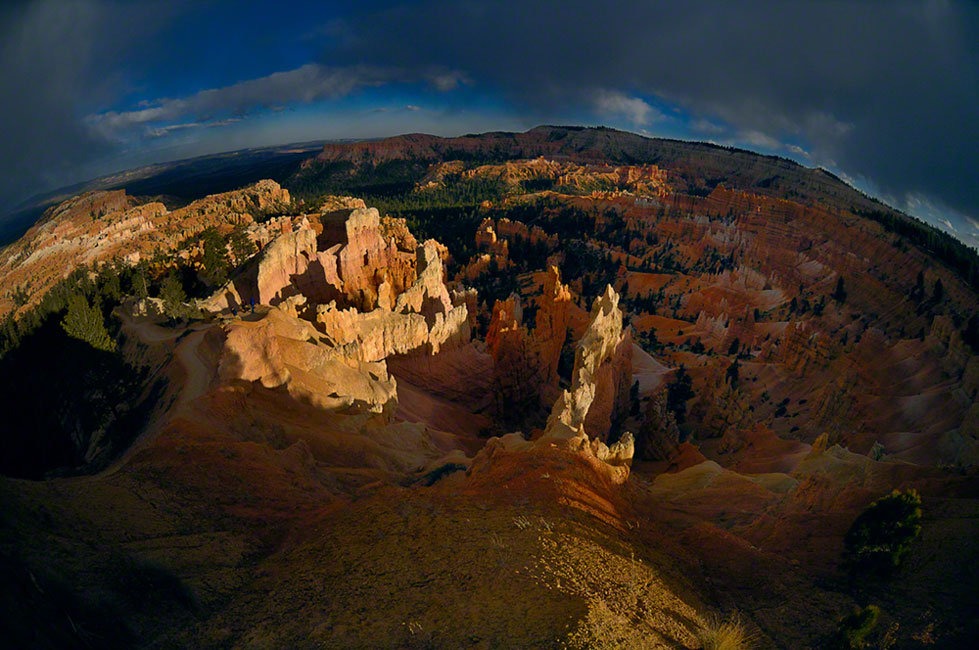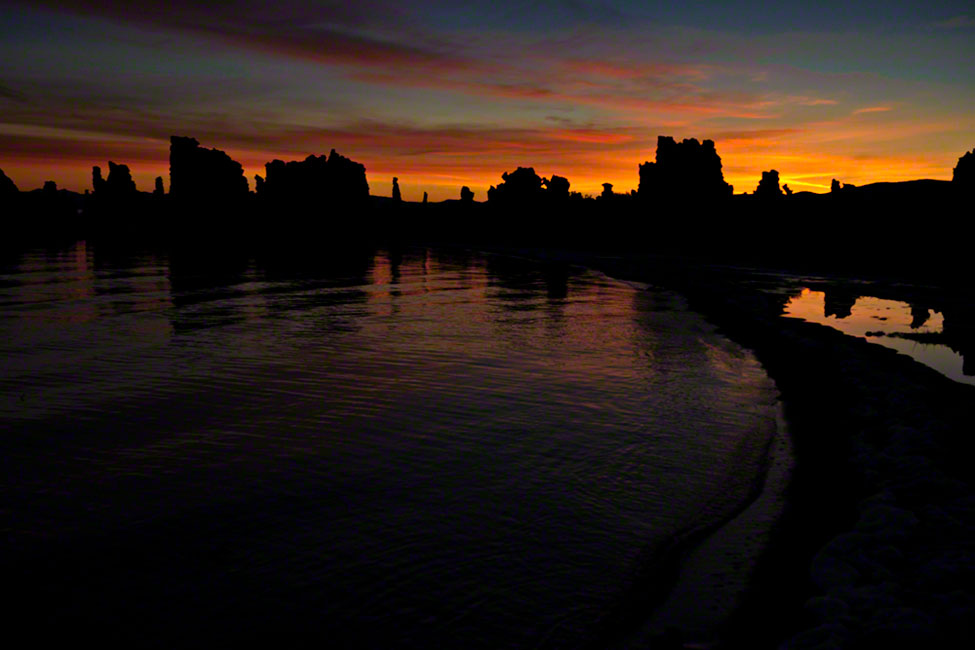Taking Your Wide-Angle Lens to the Edge
Shooting from a precipice
There’s something about the “edge” that draws us to it. Be that of a lake, canyon or giant hole in the ground, we just have to walk over, take a peek and experience life on the edge. Quite often we take our camera with us to record such moments; and find that when we’re back in the confines of our homes, the photos just don’t have the same sense of adrenaline rush as the real thing.
There are many ways to bring back this feeling in your photography. The easiest is with a wide-angle lens. What we need to do with the camera is replicate the “binocular vision” seen by our eyes—that’s what’s giving us the thrill of standing on the edge. Our vision takes in an angle of view of about 120 degrees, giving us a starting point for selecting the lens. My preference is to use a fisheye (either the 10mm or 16mm) or wide-angle zoom lens such as the 14-24mm, 16-35mm or 10-24mm. The fisheye lenses provide a 180 degree angle of view and the zooms provide anywhere from 84 degrees up to 114 degrees.
Often when you’re out in the field, literally standing at the edge of a canyon, there’s only room for you, and not a tripod. This means you need to use proper handholding to get a sharp image. This basic technique is: with your feet firmly planted, and elbows drawn tightly into your sides, rest the lens in the palm of your left hand, while your right hand grasps the body, rolling your index finger to activate and then fire the camera. The camera’s rubber eye-cup acts as a shock absorber as you press the camera against your face. And finally, practice, practice, practice these basics.
With lens choice and position set, it’s time to bring the edge into the viewfinder. You’ve heard of the fear of heights? This very three-dimensional reaction to standing on the edge, in large part, comes from the visual depth we perceive. The common cure for a fear of heights is to NOT look down! That’s exactly what we want to do with our cameras, look down! Pointing our cameras downward changes everything visually, from the vanishing point to lowering the horizon line, which is responsible for giving us the perception of visual depth in a photo.
With this in mind, we need to add one more essential element to the photo. We need a visual anchor in the frame. This can be anything, big or small, from a rock to your foot, but it’s a visual anchor for our eyes to lock onto and then venture out into the frame and come back to. This visual anchor is what tells our brains we’re on the edge and bring the three-dimensional feeling of being on the edge to our one-dimensional world. With all of these ingredients we can further fine-tune the photo to perfection.
Next, you’ll want to consider the aperture you choose. With wide-angle lenses, the depth-of-field is, by the lens’ very nature, grand. Depending upon the effect you’re after, you might or might not want that. You might want to focus on a rock in the foreground and have the background beyond the edge be slightly out of focus. You might want the opposite. It’s your photo, your adventure to the edge, and your story to tell!
More than likely the sky will be part of this entire experience. The sky can lend to the visual depth. The addition of clouds in an image, or the use of a filters (polarizer or split graduated filter) or a combination, are great ways to bring additional drama to an image.
Being safe is definitely the first consideration to working on the edge. Then it’s up to you and your camera to bring that “fear of heights” tingle to your photographs. Practice on a balcony using a simple glass or other object as the “anchor” to your composition; try to produce a photo that makes it feel like the object is just about to fall over. Once you become adept at it, you’ll be ready to walk up to the edge of the Grand Canyon, Glacier Point in Yosemite or any other great edge our world offers, and make that great shot. Take your viewer with you when you take your wide-angle lens to the edge!
Moose Peterson is a Nikon Ambassador.
Read more on his ambassador page.









